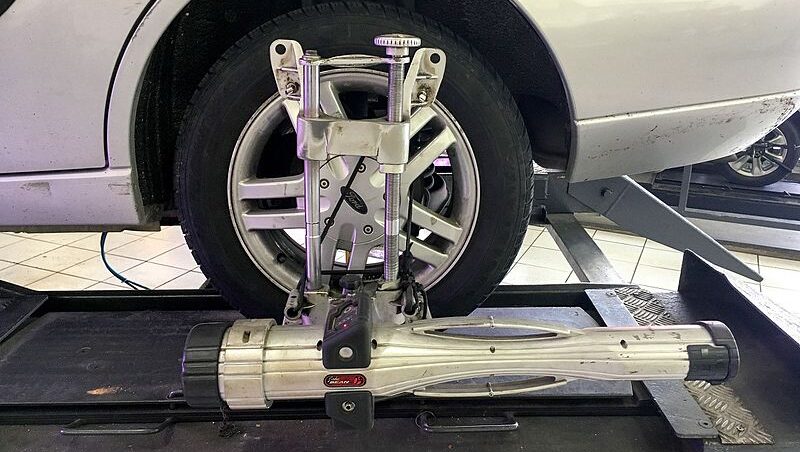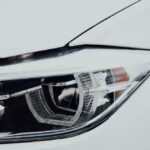Nowadays, new cars have many features for the driver’s convenience. These cars give a gentle, smooth drive for the ease of the passenger and the driver. But if the car is not providing adequate comfort, vibrating, shuddering, and rattling on the road, it is a sign that the car needs a wheel alignment. Most drivers do not know how much it is important to arrange their cars’ wheels. Drivers usually think that the tire is fine if there isn’t a puncture.
How Important is Wheel Alignment?
Car alignment is normal protection that includes the wheel alignment of the tires’ angles; they have to be set in their place. Proper alignment improves braking and fuel economy. It also helps determine that the wheels and tires are in their perfect place. And if you do align the four wheels correctly, the tires will work better.
Disadvantages of Nonalignment
If the wheels lack proper alignment, it puts rough force on the tires. The result will be that they push each other. This can lead to uneven resistance and friction on the road. This uneven resistance and friction on the tires will make the car push harder, and you burn more fuel than usual. And if there is more resistance, there is more pressure on the rubber of the tires. This causes the tires to tear and eventually become bald from one side. If this happens, then it is a fact that you will have to spend more money to buy new tires. If tire alignment is poor, the tire will wear out rashly. If the tires are poorly arranged, your car will always pull itself to one side, which increases the risk of accidents. The poor arrangement also affects the suspension, which can negatively impact your driving experience.
How Do I Know If I Need a Tire Alignment?
Wheel alignment is a very good procedure to opt for when something happens to your car’s suspension or steering. It is also the best way to reset the suspension and steering back to the way it was. You may need to arrange the wheel for the following reasons as well.
- The steering wheel feels crooked
- The steering wheel does not return to the center after a turn
- Your car pulls to the left or right while driving.
- You start feeling the vibration from the suspension and tires
- You recently had a pothole or had a rush to a cur
- The steering wheel does not return to center after a turn
- The tire will become worn out of outside or inside edges.
- You recently hit your truck into a pothole or had a curb brush.
- Your truck had a crash.
- Components of suspension or steering recently replaced.
- The steering wheel is crooked
- Suspension or steering components are worn
Factors Affecting Wheel Alignment
It is a fact that tires should be parallel to each other and be perpendicular. Whenever the wheel pulls to one side or sharp curbs occur, drivers realize that their tires are not aligned properly. Vibration, irregular tire wear, and odd handling are the clues. There are three factors that affect the alignment of the toe-in, caster, and camber. You can check the first two at home easily.
Toe-in
The front tires of the car will slightly open, and you will have to put a slight load on the bearing of the car. The best hint to a toe issue is when you see an equal saw-tooth wear design on both of your front tires. In the event that the track squares highlight the casing, the toe-in is over the top, pointing outward demonstrates an excess of toe-out. Toe-in spec-check and alteration appear in the going with photographs.
You need to measure two things when adjusting the toe. The first thing you need to consider is measuring midway up the tires. If the body of your vehicle is impractical, take the rear and front measurements, then one-quarter of tires. At that point, twofold to get the genuine toe measurement, as it will be the focal point of the tires. Likewise, you can fix an off-center guiding wheel by altering one tie-bar more than the other. (Directing wheel position has no impact on your last tire alignment.)
Camber
This is the angle your wheels make between the vertical steering axis and vertical axis when viewed from the top. If the top of the tire leans outward, it is a positive camber, and if it leans inwards, the camber is negative. New cars have slightly negative cambers, which improves handling and stability. Two signs of camber issues are when the tire is pulling to only one side. The camber is easy to check if you have a straight edge and an angle finder. Suppose one tire with the same length is like the wheel width so that the bulge of the tire does not interrupt the straight edge. Most front wheel drive trucks do not have the adjustments for the camber. The camber will indicate bent or worn parts. With trucks that include adjustable camber, this may require shims in the center of the control arms, frames, and rotating cam bolt. Most car owners think it’s a better option to get an alignment at an alignment shop, but only if the cars have different suspension.
Caster
It is the angle of the steering turn-in degrees. Similar to how water skiers lean have to back for more stability, many cars come with a slightly negative caster. The ball, called the upper ball joint, is attached to the rear part of the lower ball joint.
You can detect caster problems when your car pulls to one side. If the wheel hopping is over bumping and the steering is heavy, then the car’s caster is highly positive, and if the steering is light, it is a clue for a negative caster. Arranging the parts always includes replacing or repairing chassis parts, so you will have to leave it to the caster pros.
Steps of Wheel Alignment
For wheel alignment, you need to follow these steps. You may start from the rear and adjust the camber and then adjust the toe. Then, you will have to move the front wheels, adjust the caster, the camber, and finally, the front of the toe.
After you see that all of them are moving free, you can complete adjustment in fifteen minutes. Cars with a fixed axle cannot be adjusted for the rear toe.
STEP 1
If you have locked the pedaling of the wheel, the position should be straight ahead, and if you applied the brake, it would measure the castor and camber.
STEP 2
Fix measuring heads into the centerline scales and rear wheels, and then you should switch the lasers on.
STEP 3
The number which is hit by the laser light scales should be the same while reading. And if they vary, you will need to adjust the rear toe to rectify thrust angle deviation, if there is any.
STEP 4
To calculate the rear toe, you have to read the toe scales. Keep in mind that when the heads are reversed, the reading will show the opposite way. Now the toe-in will now become toe out. Then you will have to correct the rear axle; then, you should finish the two center lines that will read the same. Now, you have successfully completed the rear adjustment.
STEP 5
For this step, fix the measuring heads to your front wheels. Then, you should fix the center line scales with the rear wheels. Now, use the same process as you did for the rear of the vehicle to calculate and adjust. Keep in mind that now, the heads are the correct way around; hence, the reading will read correctly.
STEP 6
You should be able to easily see every toe and thrust angle reading while standing under your car.
STEP 7
This is when you make optional Camber/Castor adjustments.
Conclusion
If you don’t opt for regular wheel alignment, it may lead to toe and camber issues. Eventually, these issues can lead to pulling. The wear of the tires will lead you to drift or pull, which causes rash wear on the suspension parts. Consequently, all of that adds up, so you incur a higher cost. You will have to make sure that you have carefully carried out all the steps for wheel alignment and that you took care of technical basics after getting spare parts for suspension and steering. Visit BudgetMotorsReno.com and Blog.BudgetMotorsReno.com







